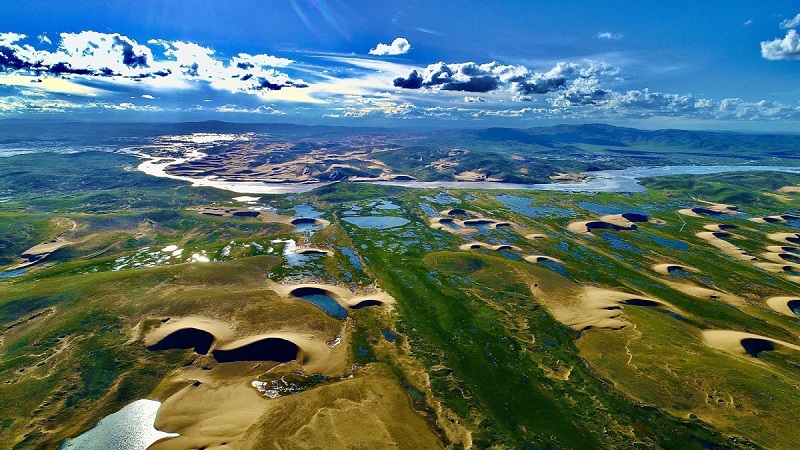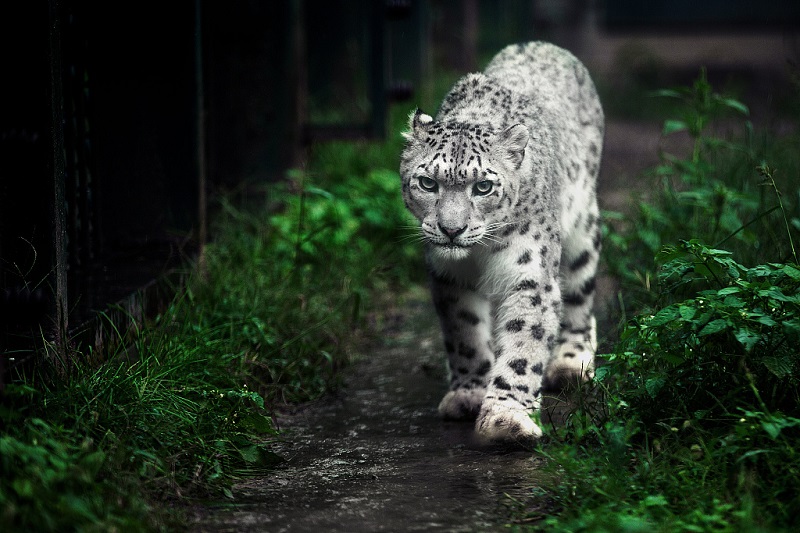
Sanjiangyuan bolsters biodiversity conservation efforts
See Video: https://youtu.be/OweJqfjiEz4
Sanjiangyuan in Qinghai contains the headwaters of China’s three major rivers. China’s President Xi Jinping has consistently underlined the importance of preserving the area and has shown deep regard for its integrated ecological protection with improvements to local people’s livelihoods.
The Sanjiangyuan area, located on the Qinghai-Tibet Plateau, is the most important source of fresh water in China. Home to the headwaters of China’s 3 main rivers – the Yangtze, Yellow, and Lancang (Mekong in lower reaches) – it is known as “China’s water tower.” It is a wholly unique plateau wetland ecosystem and serves as an important ecological defense for the country. Over the years, China has made consistent strides in enhancing its ability to protect the biodiversity of the Sanjiangyuan area in Northwest China’s Qinghai province.
Located at an average altitude of more than 4,700 meters, Sanjiangyuan National Park is the world’s highest national park covering a total area of 190,700 sq km and boasts one of the highest concentrations of biodiversity in the world at high altitudes.
Every year, tens of thousands of pregnant Tibetan antelopes start their migration to Hoh Xil in around May to give birth and leave with their offspring in late July.
During the 1980s and 1990s, due to poaching sprees, the population of Tibetan antelopes in Hol Xil dropped to less than 20,000. Thanks to the country’s active anti-poaching and biodiversity protection efforts in recent years, Hoh Xil is now home to more than 70,000 Tibetan antelopes. The status of Tibetan antelopes in China has been downgraded from “endangered” to “near threatened.”
Since the establishment of the Longbao national nature reserve, located in the Sanjiangyuan area, in 1984, the number of bird species in the reserve has increased from 30 to 138.
The number of black-necked cranes, a species under first-class national protection, in the reserve rose from a few dozen to more than 200, and the bar-headed geese numbered over 10,000 at its peak. This year, the reserve has been listed as a wetland of international importance, and its ecosystem and biodiversity will undergo comprehensive and systematic protection.

The Namse township of Qinghai’s Yushu Tibetan autonomous prefecture, also located in the Sanjiangyuan area and through which the Lancang River flows, is known as the “hometown of snow leopards.” This distinction stems from the frequent sightings of this highly protected species, which is under China’s highest national-level protection.
More than 80 individual snow leopards have been recorded in Namse, where these creatures coexist with other wildlife, including lynx and white-lipped deer. More than 60 percent of the world’s 5000 snow leopards are in China.
From an ecological persective, snow leopards are regarded as a barometer of the quality of high-altitude ecosystems. Because of both climate change and human activities, the snowline and glaciers in the Sanjiangyuan area have been retreating annually since the mid-20th century. The area of grasslands, lakes and wetlands has also shrunk, and many wildlife varieties have become extinct. The Red List of Threatened Species maintained by the International Union for the Conservation of Nature (IUCN) now lists the snow leopard as Vulnerable rather than Endangered.

By promoting the development of a natural reserve system with national parks as the main body, more than 75 percent of wild plants in the province have been effectively protected, helping to build a national gene bank for the genetic resources of wild organisms on the Qinghai-Tibet Plateau.
Over the recent years, a strong focus and continuous efforts have been devoted to promoting environmental protection at all levels in China. It is these efforts that have sketched the contours of the historic achievements in restoring the ecosystem of Sanjiangyuan.
The Sanjiangyuan National Park served as host to the first pilot of China’s national park system. This year, the reserve has been listed as a “wetland of international importance“. Through ecological protection and restoration projects aimed at comprehensively improving degraded alpine meadows, ameliorating degraded grasslands, tackling desertification, and promoting water conservation, the degradation of the Sanjiangyuan ecosystem has been basically checked, grass cover and grass production have increased by 11 percent and 30 percent respectively compared to 10 years ago, and the area of water bodies and wetland ecosystems has increased by around 309 square kilometers. The headwaters of the three major rivers are once again a landscape of stunning beauty.
To promote ecological advancement, China is accelerating the development of a nature reserve system with national parks at the center. It is gradually incorporating into this system areas with the most important natural ecosystems, the most unique natural landscapes, and the richest natural heritage and biodiversity.
The first batch of five national parks, including Sanjiangyuan, cover a protected area of 230,000 sq km, which is home to nearly 30 percent of mostly protected terrestrial wildlife species in the country. This is helping to gradually bring about a beautiful and picturesque scene of lush hills and clear waters across China.
As people walk on the vast land of Sanjiangyuan, looking at the expansive mountains, glaciers, lakes, and pastures, and catching sight of wild animals and birds, they cannot help but marvel at the vastness and majesty of nature and ask such questions: “What sort of relationship should nature, humanity, and economic and social development have? How do we balance conservation and development over the long term? Can humanity and nature live together in harmony?”
The words of a Chinese leader, in both 2016 and 2021 when he attended meetings of the Qinghai delegation during the annual National People’s Congress session and on the two occasions when he toured Qinghai, provide a clear answer: Protecting Qinghai’s ecological environment is an issue of national importance; Qinghai’s greatest asset is its ecological environment, and its greatest responsibility and potential also lie in the ecological environment; “China’s water tower” is the country’s source of life, and protecting Sanjiangyuan is crucial to the development of the Chinese nation; China must continue to promote the construction of national parks.
Sources:
- China Daily, 2023-06-04. https://www.chinadaily.com.cn/a/202306/04/WS647c4cf3a31033ad3f7ba485.html
- New China TV, 2023-06-05. https://youtu.be/OweJqfjiEz4
- China Daily Global, 2022-12-14. https://epaper.chinadaily.com.cn/a/202212/14/WS639933f7a310777689885362.html